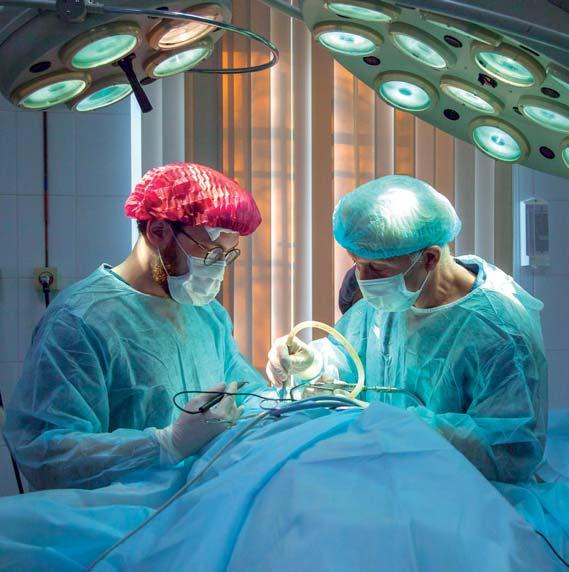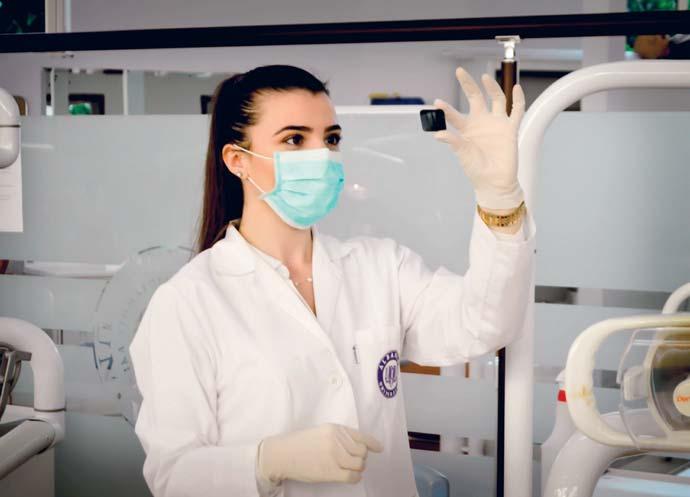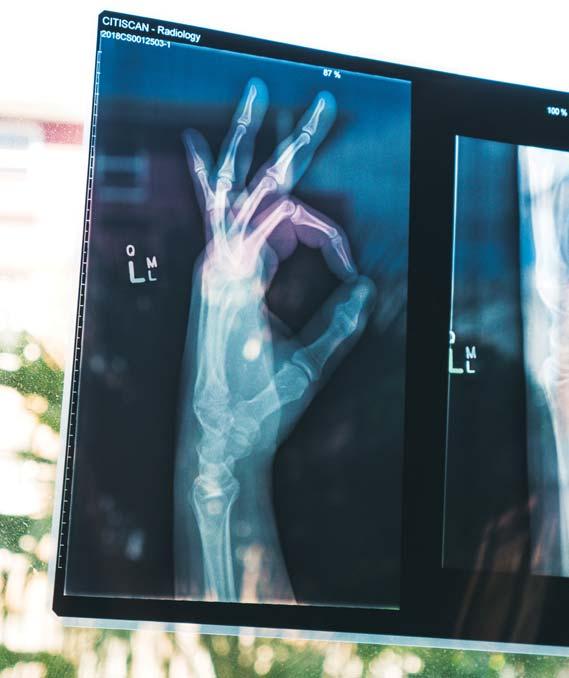
5 minute read
73
by 5rXobdlLrFp
Building tomorrow’s care model for Wallonia
Interview with Ms Christie MORREALE, Vice-President of the Walloon Government and Minister of Employment, Training, Health, Social Action, Equal Opportunities and Women’s Rights
Advertisement
How would you assess current public health in Wallonia? According to the synthesis report of the Walloon Institute for Evaluations, Forecasts and Statistics (IWEPS), 74% of the Walloon population defined their health status as good or very good in 2018. This figure is based on the results of national health surveys conducted by Sciensano in 2013 and 2018.
However, the survey carried out by Sciensano in 2018 came up with some disturbing findings. For example, 3 in 10 people report to suffer from a disease or chronic health problem, 25% experience physical limitations in their daily lives, and nearly half of the respondents are overweight.
Knowing that today 2 in 5 people choose not to see a doctor due to lack of financial means, a figure that amounts to 3 in 5 people for single-parent families, it is high time to take action and reverse this trend.
What are your health policy priorities? In general, my priority for this legislature is to build Wallonia’s future care model. It will be broadly modelled on our national social model, which is quite unique: guarantee high-quality healthcare that is accessible to all regardless of the socio-eco

© Olga Guryanova
nomic status of individuals. To implement this ambitious project, I hope I can count on a number of significant stakeholders such as the mutual companies, AVIQ, CPAS and all the healthcare stakeholders. I also count on their capacity to think in terms of accessibility, multidisciplinarity, de-compartmentalisation and exchange of data.
Several initiatives are planned for this legislature, such as the reform of hospital networks or the strengthening of home care services. In the area of healthcare access, there is no shortage of priorities Allow me to pick out a few in particular: the need to increase the number of general practitioners, medical centres and first line care services in areas where scarcity is a major concern; the need for cost-effective screening methods; easier access to the morningafter pill in planning centres; a new model for individuals with diminished autonomy so they can remain at home as long as possible, if they so wish; more psychological support for individuals; and finally, control of tariffs charged by rest homes and nursing homes. © Alexandre Trimboli
What means and mechanisms do you have in place to successfully implement your policy? For 2020, Wallonia has allocated a budget of more than €400 billion to support senior health and policy, an increase compared to the 2019 budget.
What do you think are the strengths of health research and innovation in Wallonia? First of all, I would like to mention the level of Research and Development in Wallonia. If we look at the 10 year trend, we see that the level of Research and Development has gone up, both in terms of percentage of GDP and in euros per capita. This places Wallonia above the European average (2.03%). This success is the result of growing investments in R&D by companies but also of the support from public authorities.
In terms of key players in health innovation, Wallonia can rely on the excellence of its research environment thanks to our universities, our research centres, our businesses and, as far as my powers as Minister of Health are concerned, on an efficient hospital sector that provides high-quality healthcare to everyone.
What support does the Walloon Government provide to the BioWin competitiveness cluster? The BioWin competitiveness cluster helps Wallonia in making its research, development and innovation in the field of health biotechnology and medical technologies, internationally known. Considering that the pharmaceutical sector is one of the drivers
© Ani Kolleshi

of growth in Wallonia, both in terms of added value and exports, it is important that the Government supports BioWin. Since this cluster was introduced in Wallonia, around fifty research projects have been financed, representing an investment of more than one hundred million euros by the Walloon Government. However, the clusters focus not only on research; also 17 training projects were financed for an amount of over 30 million euros.
Could you give us a few examples of health research projects being supported by the Walloon Government? Let me first of all point out that research in Wallonia is not limited to the competitiveness clusters. There are also the support facilities that the Walloon Region provides to help a large number of companies develop their research.
Allow me to cite two examples: UNIVERCELLS specialises in the development of production processes that make it possible to reduce the size of factories and therefore also production costs. Their most advanced products are vaccines, with more specifically a polio vaccine and a rabies vaccine that is currently under development. In fact, it was a project financed by the Walloon Region that enabled them to develop a prototype, on the basis of which they received funding from the Gates Foundation.
KIOMED PHARMA also received several grants to develop projects for therapeutic applications based on non-animal chitosan. Compared with rival products, their formulation of chitosan features anti-inflammatory properties that should result in improved efficacy and tolerance. It should also be borne in mind that all these projects financed by Wallonia also generate jobs on our territory.
What do you think are the biggest health challenges that Walloon researchers and entrepreneurs will face in the coming years? Generally speaking, I would say that the biggest challenge is to develop a visionary and ambitious policy for the Walloon population. In terms of challenges, I would like to mention three main themes that must be incorporated into the entire regional health policy: prevention, promotion and support. To this end, it is necessary to integrate patients as active participants in their own health (allowing them to intervene in the choice of their


care providers, to obtain an overview of their medical records, for example) and to involve them in a sound and structured way in their care pathway.
Health policy in general needs to accommodate today’s socioeconomic realities and adapt to changes in family structure (single-parent families, families with working couples, etc.).










